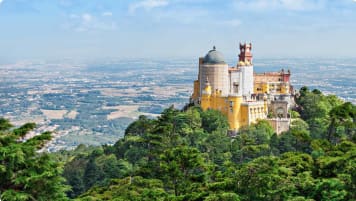Barcelona Travel Notes
Barcelona is one of the cultural highlights of Europe. Situated on the Mediterranean coast of the Iberian Peninsula, the Catalan capital is famous for its distinctive architecture and its world-renowned food and wine.
18 Dec 19 · 13 mins read

Barcelona Travel Notes
The entrancing cosmopolitan city of Barcelona is one of the cultural highlights of Europe. Situated on the Mediterranean coast of the Iberian Peninsula, the Catalan capital is famous for its distinctive architecture and its world-renowned food and wine. Odyssey Traveller organises small group tours to one of Europe’s most popular destinations. If you really want to get your Iberian juices flowing, try pairing this with one of Odyssey’s tours of Spain and Portugal. For total immersion consider this long stay program in Barcelona!
History of Barcelona
The city of Barcelona was believed to have been founded by either the Phoenicians or Carthaginians. Under the Romans, it was known as “Colonia Faventia Julia Augusta Pia Barcino” or Barcino, which gained importance around the 3rd century AD. When the Roman Empire fell in the 5th century and Spain was invaded by other forces, the Visigoths called it Barcinona and the Moors called it Barjelūnah.
The Carolingian dynasty, descendants of Charlemagne, gained hold of the city in 801. It was its most southerly possession taken from the Moors, and its borders were defended by the royally appointed counts of Marca Hispanica (Spanish Marches). By 865, this military buffer zone between the Carolingian Empire and the Umayyad Moors became a hereditary territory known as the County of Barcelona. As the Carolingian kings weakened, the Barcelona counts, at first no more than administrators, gained power separate from central rule and began invading Moorish territory. The city of Barcelona became prominent among the march territories due to its excellent fortifications, and by the 10th century the County of Barcelona was de facto independent, ruling over the marches now known as the Principality of Catalonia.
In 1137, Catalonia merged with the Kingdom of Aragon through the marriage of Ramon Berenguer IV, Count of Barcelona, with Petronila, Queen of Aragon. Aragon on the Iberian peninsula (corresponding to modern-day Aragon) was originally a Carolingian feudal county which later grew prosperous from maritime trade. The union brought more riches to Barcelona and turned it into a major trading city.

Initially sidelined by the rise of the Italian city-states, James I of Aragon and Catalonia captured the Mediterranean islands of Majorca in 1229 and Ibiza in 1235. The islands became the base of his trade and political expansions. Catalan ships now plied the Mediterranean passage-ways with the Italian ships.

In 1469, the marriage of Ferdinand II of Aragon and Isabella I of Castile formed the beginning of modern Spain, but also spelled the decline of Barcelona. In addition to the effects of the plague that swept the city in the 14th century, political power was moved to Madrid, which historically was where Castile convened its courts. The colonisation of the Americas (the “New World”) also lowered the financial importance of Mediterranean trade.
When Charles II of Spain died childless in 1700, the leadership vacuum threatened the balance of power in Europe as his closest possible heirs belonged to the Austrian Habsburg dynasty and the French Bourbon families. The War of the Spanish Succession began in 1701 and lasted until 1714, during which Barcelona sided with the losing Habsburgs and was sacked by the Bourbon Philip V.
Towards the end of the 1800s, an avant-garde style of music, literature, art and architecture evolved in Barcelona, which led to a regional artistic and linguistic renaissance. This cultural re-birth went on to become a means of expression for Catalan nationalism. The major exponent of this ‘modernism’ in architecture was Antoni Gaudí, whose buildings and monuments have left an indelible mark on the city. Barcelona gained prominence again during the Industrial Revolution, increasing its wealth from the end of the 18th century.
The following century was a turbulent time, with forces opposing the monarchy. The Spanish Civil War began in 1936 and Barcelona, supportive of the Republicans, fell to the forces of Nationalist General Franco, supported by Fascist Italy and Nazi Germany, in 1939. This led to a massive exodus of Barcelona residents to the French border. Franco would rule Spain until 1975, and a process of democratisation began in the country, particularly in Barcelona, whose Catalan institutions and culture was suppressed during the Francoist regime.
Culture and History of Barcelona
There is so much to see and do in Barcelona. Learn about the history of the city, from the early Roman settlements to the Spanish Civil War. Wander among the intricate streets and plazas and gaze up at Barcelona’s world-famous architectural masterpieces. Dine at amazing restaurants every night of the week and enjoy the region’s incredible food and wine. Mingle with the locals at street festivals and markets. Experience some of the greatest art galleries in the Western world. Visit the Nou Camp, the colossal home of one of the world’s most famous football clubs and symbols of Catalan identity, FC Barcelona. If that’s not enough, why not take a day trip or two to beautiful nearby sites and towns like Monserrat and Andorra.
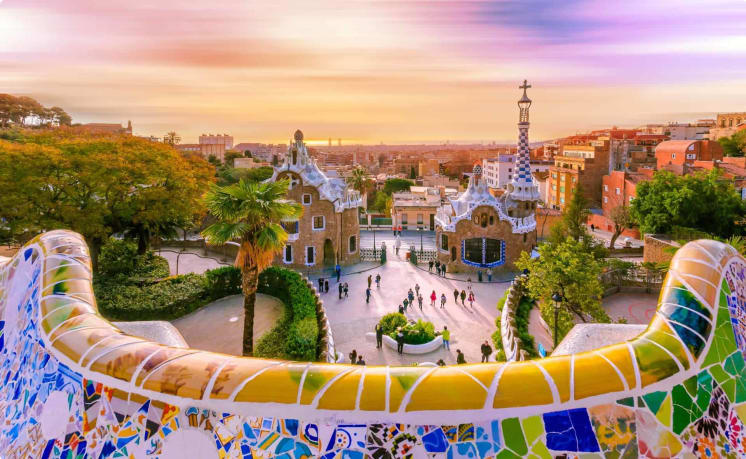
God’s architect
Barcelona is known worldwide as the home of Antonio Gaudi, the uber famous Catalan architect. Gaudi’s designs have had a profound influence on Spanish architecture, and left a profound imprint on the modern city of Barcelona. He had a remarkable attention to detail and integrated crafts such as ceramics, stained glass and carpentry into his architecture. He rarely drew detailed plans of his designs, preferring instead to construct three-dimensional models. A deeply religious man, Catholic images appear throughout his work, earning him the nickname ‘God’s architect’. Amazingly, seven of his works have been declared World Heritage Sites by UNESCO.
Sagrada Familia
The most famous of Gaudi’s works is the still-unfinished Sagrada Familia. The structure is still the most visited monument in all of Spain. One art critic wrote that ‘it is impossible to find a church building anything like it in the history of art’. Its style is sometimes referred to as ‘late Gothic’ or ‘Catalan Modernist’. Monumental in size, its most striking features are a number of towering spires. When finished, it will be just one meter shorter than Barcelona’s Monjucic Hill, as Gaudi believed that his creation should not surpass God’s.
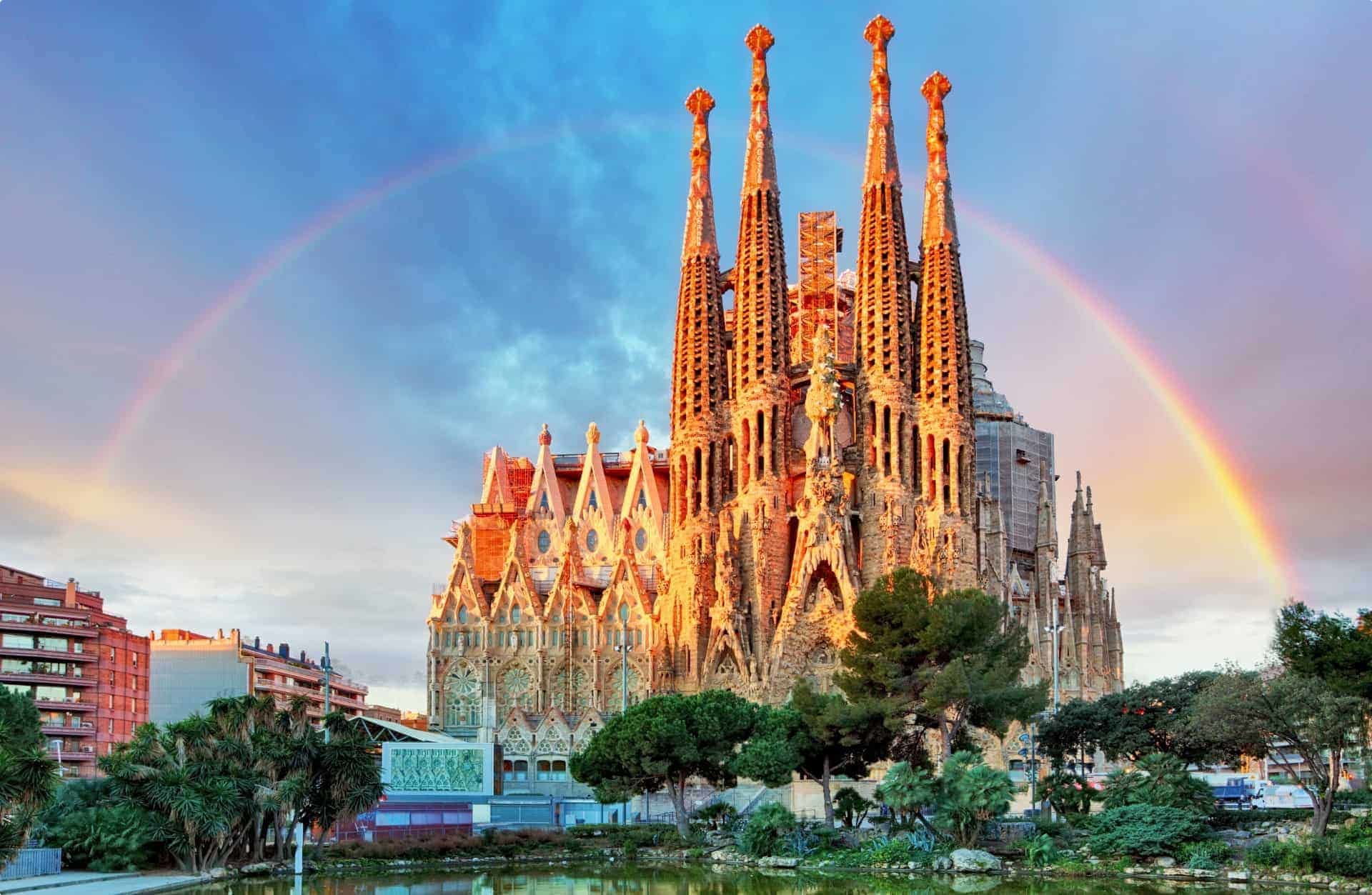
Other Gaudi Masterpieces
You could spend days checking out all of Gaudi’s buildings, but be sure not to miss Casa Mila, sometimes called ‘the stone quarry’, a rough hewn modernist building constructed between 1906 and 1912. Near the center of Barcelona is Casa Batllo, a remodel of an existing house that has a visceral, skeletal feel. The façade is decorated with a colourful mosaic of broken ceramic tiles and the roof resembles a dragon. Finally, check out Park Guell, a world heritage listed public park system of gardens and architecture that Gaudi designed during his naturalist period.
Barcelona Cathedral
This spectacular Gothic cathedral in the heart of Barcelona was constructed between the 13th and 15th centuries. Officially known as the Cathedral of the Holy Cross and Saint Eulalia, named after the patron saint of Barcelona. It is the seat of the archbishop of Barcelona, and contains a cross said to date from the time of the battle of Lepanto in 1571. Towering over 90 meters above the plaza below, keep your eyes (or binoculars) peeled for the gargoyles and other mythical animals adorning the roof.

Monjuic Castle
Sitting atop Barcelona’s iconic Montjuic Hill, the Castell de Montjuic dates back to the 17th century when the area was used for military purposes. During the Catalan Revolt, the locals used this fortress as a base for their operations against the Spanish crown and was the site of a significant military victory during that conflict. As such it has special significance for the fiercely independent Catalans. Today the museum is a popular attraction and runs a program of exhibitions all year round.
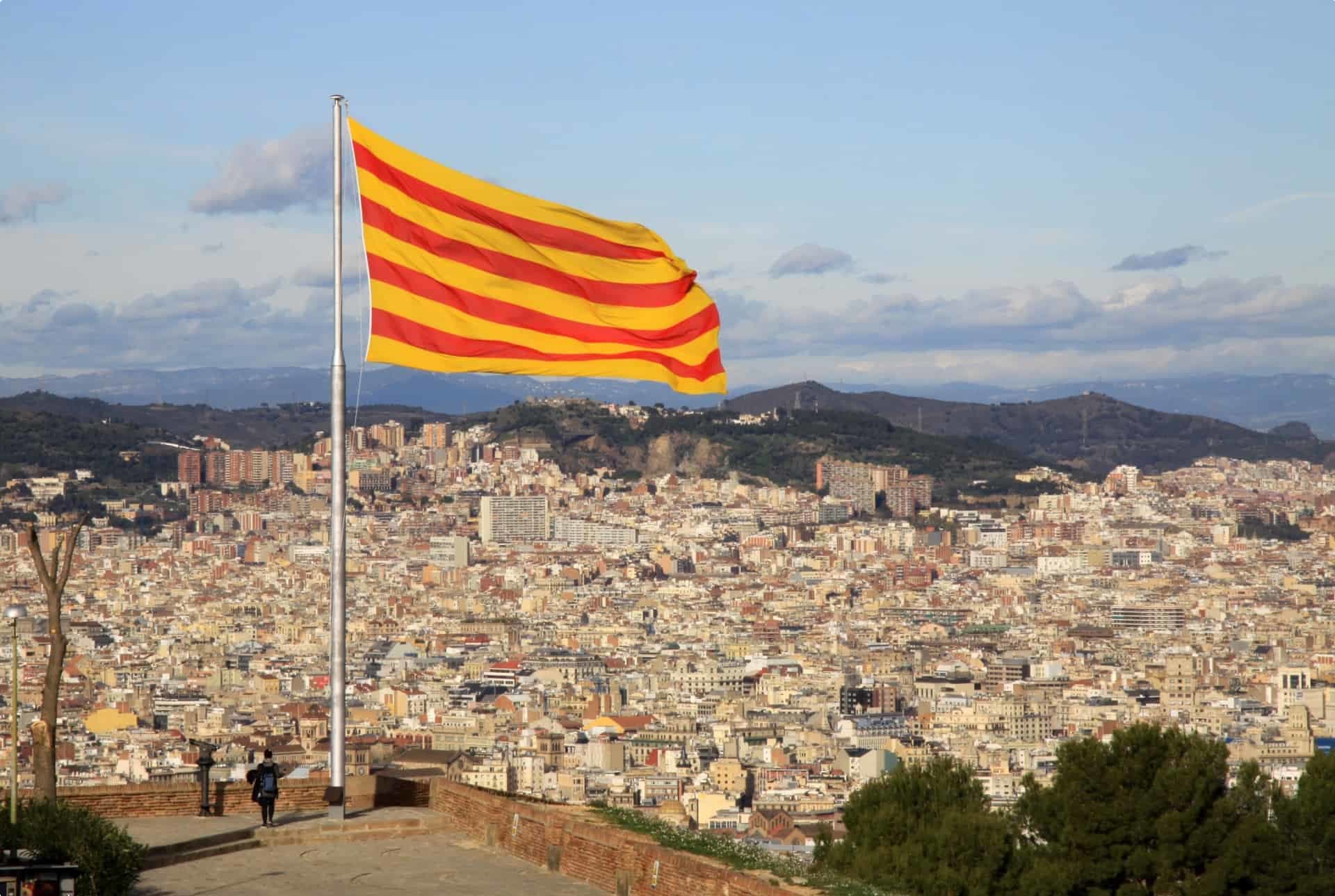
Gothic Quarter
The Gothic Quarter, or Barri Gotic, is the centre of the old city of Barcelona and includes the remains of a Roman wall and a number of medieval landmarks. Most of the present-day appearance of the area dates from the 19th and 20th centuries, when the Gothic revival was in full swing. Within the quarter is the Jewish Quarter, which has Spain’s oldest synagogue. At the end of the 7th century, Barcelona’s Jews were enclosed in this small section of the city, known as ‘El Call’ and located in the middle of the Gothic Quarter. Without the ability to expand outside its boundaries, the residents built onto the streets, meaning the area is filled with cramped laneways and passages. At the centre of the district is Spain’s oldest synagogue, the Sinogoga Major de Barcelona, thought to have existed since the 5th century.
Also enclosed within the Gothic Quarter is the 15th-century Basilica of Santa Maria del Pi ; Barcelona Cathedral, seat of the Archbishop of Barcelona; Museum of the History of Barcelona; and Basilica Santa Maria Del Mar, an outstanding example of Catalan Gothic.
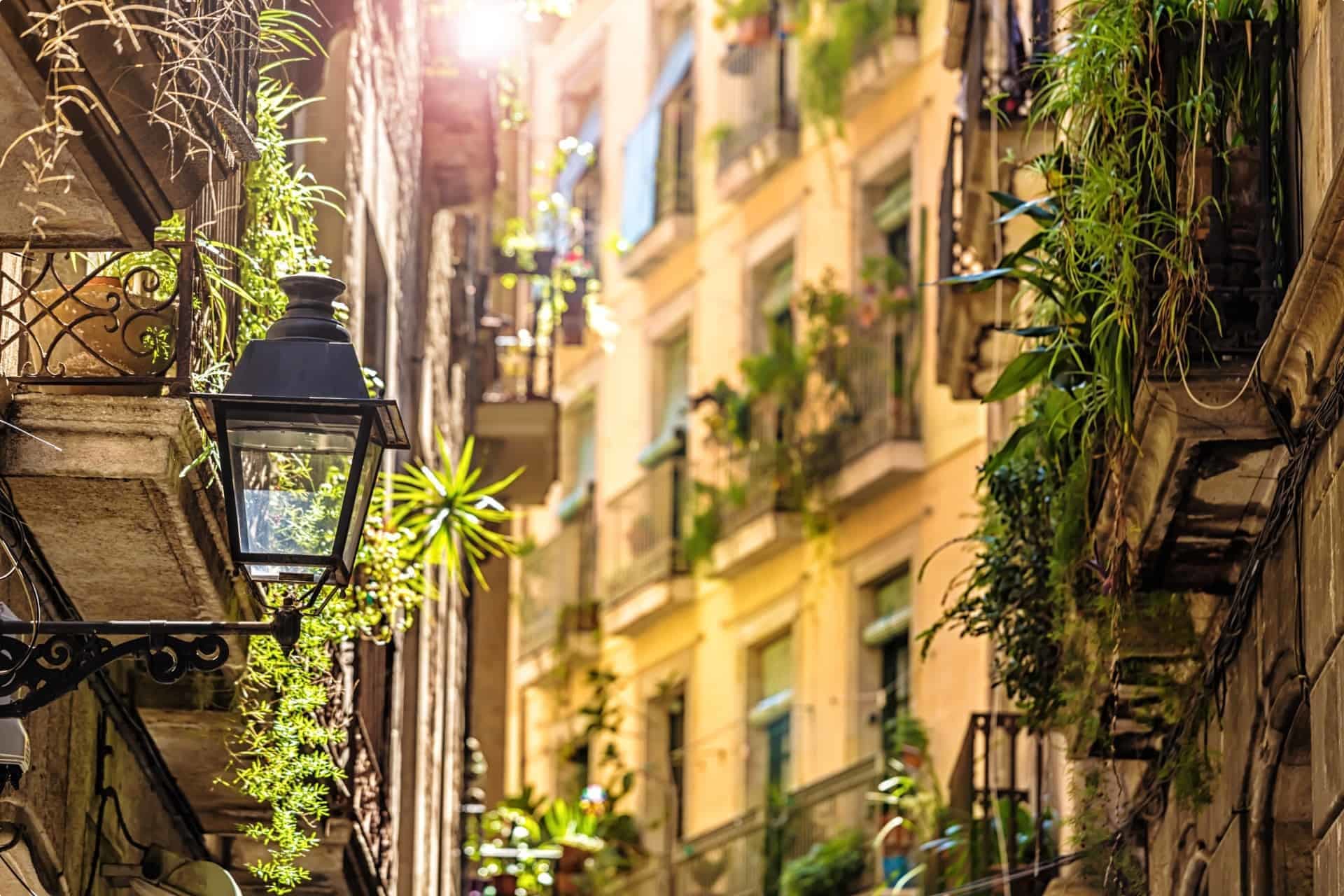
Arc de Triomf
Move over Paris – this is triumphant civic architecture: Spanish style. Built in 1888 as the main access gate for the Barcelona World Fair, the Arc de Triomf is a majestic red brickwork arch with beautiful Neo-Mudejar detailing. Its central sculpture contains the engraving ‘Barcelona rep les nacions’ (Barcelona welcomes the nations).
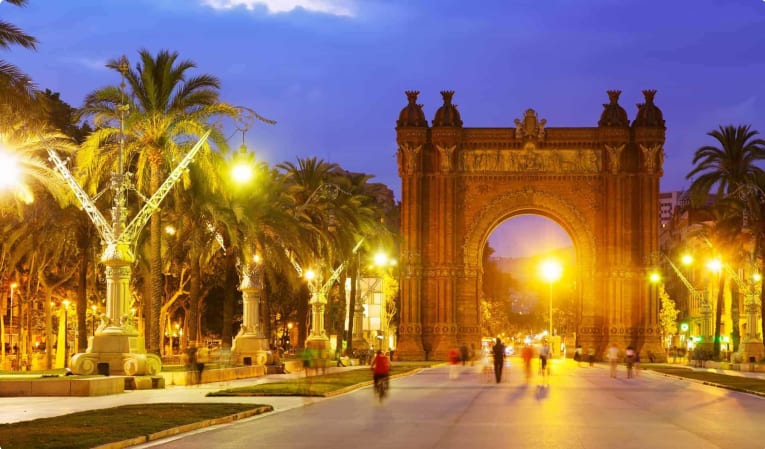
Columbus Monument
This 60m tall monument was also constructed for the 1888 World Fair and commemorates Christopher Columbus’ famous first voyage to the Americas. The statue sits atop the a 40m tall Corinthian column at the lower of end of La Rambla, one of Barcelona’s central arteries.
Jewish Quarter
At the end of the 7th century, Barcelona’s Jews were enclosed in this small section of the city, known as ‘El Call’ and located in the middle of the Gothic Quarter. Without the ability to expand outside its boundaries, the residents built onto the streets, meaning the area is filled with cramped laneways and passages. At the center of the district is Spain’s oldest synagogue, the Sinogoga Major de Barcelona, thought to have existed since the 5th century.
Catalan Food and Dining
From familiar dishes like paella to more exotic ones like allioli and escalivada, Catalan cuisine is a delight for the senses. Catalan cuisine is quite diverse. For example, the inland regions cook many pork-intensive dishes, while on the coast many dishes are made with fish. Most Catalan dishes are based on Mediterranean ingredients: fresh vegetables like tomato, eggplant and capsicum; bread and pasta; olive oils, wines, legumes and mushrooms. Many dishes mix sweet and savoury and many are made with sauces based on a type of pork sausage known as botifarra.
Barcelona boasts many world renowned restaurants and chefs. Three of the world’s top 50 restaurants are in the Catalan region (El Celler de Can Roca, Disfrutar and Tickets). There are more Michelin-starred restaurants in the city than you could get to in one trip!

La Boqueria food market
The Mercat de Sant Josep de la Boqueria is a huge food market in Barcelona’s Cuudad Vieja district and a must-see for food lovers. It is regularly listed as one of the best fresh food markets in the world. Originating in the 13th century as a pig market, La Boqueria is now home to fishmongers, cheesemongers, greengrocers, butchers and a whole variety of small vendors. Situated right next to La Rambla, it is a great spot to stop for lunch.

Wines
Barcelona is the focal point of the Catalan wine industry. The region has a long winemaking tradition and is perhaps most famous for being the birthplace of Cava, a sparkling wine invented by Josep Raventos of Cordorniu Winery. Founded in 1551, Codorniu is the world’s oldest producer of sparkling wine. The Catalan region also produces many high quality dry white wines and some powerful reds that are sometimes known as ‘black wine’. There are nine separate wine regions in Catalonia.
Visitors to Barcelona can easily experience the best of Catalonia’s wines on any of the many day tours. In Barcelona itself, some of the best places to drink Cava are El Rincon de Cava and Bodega Maestrazgo, but there are many more to choose from. Many Barcelona wine shops allow you to bring your own bottle and pour straight from the barrel! In many restaurants wine can be drunk from a porro, which involves pouring wine from a spout into your mouth. Maybe don’t wear a white shirt!

Art galleries in Barcelona
Barcelona boasts many world-renowned art galleries. The Picasso Museum hosts a large collection (4251 paintings!) of works from Picasso’s formative years. A short train journey from Barcelona will take you to Figueres and the Salvador Dali Museum – one of the most interesting and popular museums in Northern Spain. Figueres was Dali’s home town, and this spectacular building houses one of the largest collections of his work. Elsewhere, be sure to check out Center for Contemporary Culture (sculptures and frescos), CaixaForum Barcelona (contemporary art in a former textile factory) and the Palau Nacional (a palatial museum for Catalan art from the 11th-20th centuries).
La Rambla, a great walk…..
The Spanish poet Federico Garcia Lorca once said that La Rambla was ‘the only street in the world which I wish would never end’. This tree-lined pedestrian mall stretches for over a kilometre and is one of the most popular spots in Barcelona for both visitors and locals. It is named for the stream that once ran there during the Middle Ages. It is usually crowded during the day and for most of the night. La Rambla is a window into Catalan culture. Along the promenade are kiosks, street traders, pavement cafes and bars. The ornate Font de Canaletes fountain is one of the most famous spots along the route, and a popular meeting point. Be sure to check out the pavement mosaic by the artist Joan Miro.

Placa de Catalunya
The Placa de Catalunya is the civic heart of Barcelona. Many of the city’s main streets and avenues meet at the Placa, which occupies an area of about 50 000 square meters. It is famous for its fountains and statues that are representative of Neo-Classicism and various avant-garde movements.

Parc de la Ciutadella
The ‘Citadel Park’, created in 1877, is situated on the north-eastern edge of the old city. It’s 70 acres space includes the Barcelona zoo, the Catalan Parliament, a lake, many museums and a large fountain thought to have been one of the first works contributed to by Gaudi.
Placa d’Espanya
This plaza is the second of Barcelona’s important civic squares. It features the popular Venetian Towers, two 47m tall stone and red brick structures modelled on the campanile of St Mark’s Basilica in Venice. They mark the entrance to the city’s exhibition district. The internal stairs of each tower and no longer open to the public. The magnificent fountain at the center of Place d’Espanya was designed by one of Gaudi’s friends, Josep Maria Jujol.
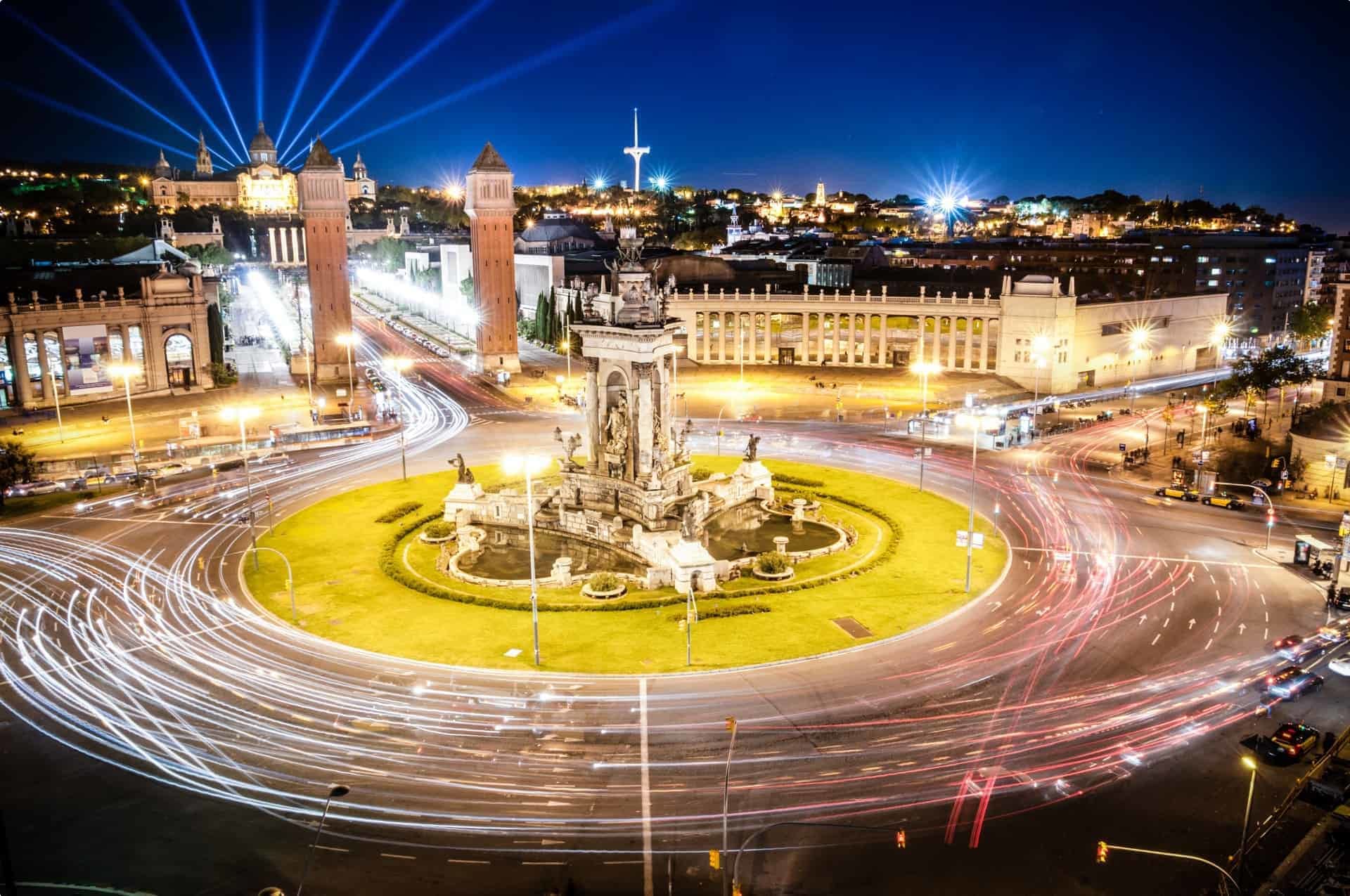
Fiesta de la Marce
Visit Barcelona in September and witness the amazing La Merce festival, an immensely popular annual celebration and street party. It was been an official holiday since 1871, when it was instituted to make the Roman Catholic feast day of Our Lady of Mercy. Up to two million people attend the festival each year. Street parades celebrate the culture and history of Catalonia, and there are over 600 events spread right across the city.
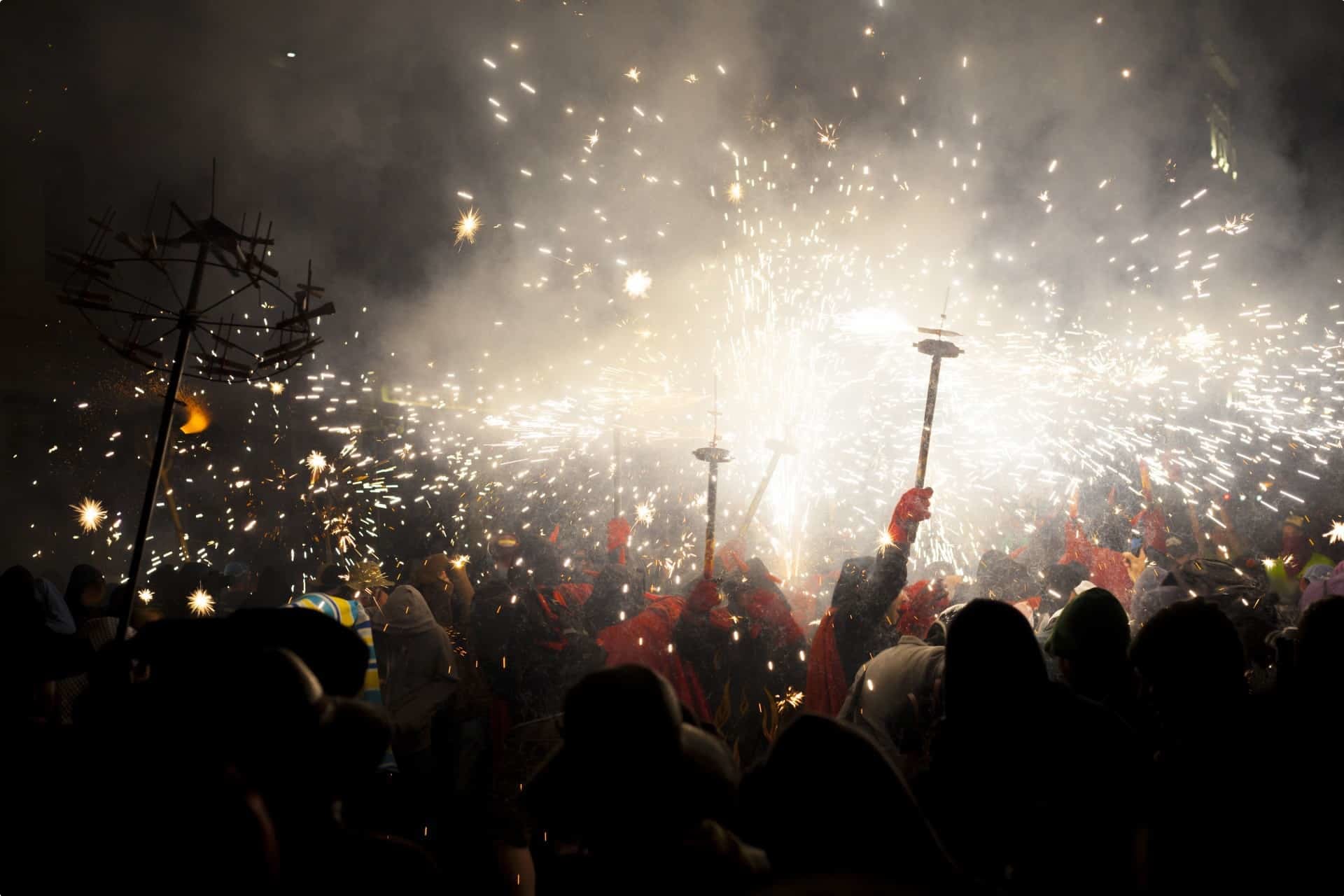
Camp Nou
Football (soccer) occupies a central place in Catalan culture and history, and its world famous football team is a source of immense local pride. Its rivalry with Spain’s other superclub, Real Madrid, has its origins in the Spanish civil war and remains politically charged to this day. At 99 000 capacity, the Camp Nou is the largest stadium in Europe. If you can’t get to a game, be sure to try the Camp Nou tour and check out the very popular FC Barcelona museum. Sports lovers should also check out the Olympic and Sports Museum at Montjuic Hill, later named after the Spanish sports administrator Juan Antonio Samaranch.
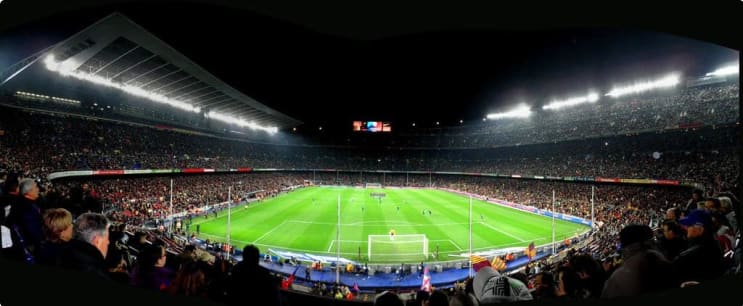
Side Trips: Zaragoza
Spain’s fifth largest city has some of the best tapas and bar scenes in the entire country, and some of the finest architecture. The magnificent domes of the Basilica del Pilar sit majestically above the blue waters of the Rio Ebro river. It is reputed to be the first church in history dedicated to the Virgin Mary. The Museo Goya contains a huge collection of artwork by the extremely influential local painter Francisco de Goya, born closeby in 1746.

Montserrat Basilica
The Santa Maria de Monserrat is a Benedictine Abbey situated 48km west of Barcelona on the upper slopes of the mountain of Monserrat. It was founded in the 11th century is still a functioning institution, housing over 70 monks. Monserrat means ‘sacred mountain’, and it is one of Barcelona’s most important religious retreats. At least once in their lives, Catalans will make an overnight hike to the top to watch the sunrise from the heights of the mountain. The monastery also includes a museum featuring the work of artists such as Picasso, Dali, Renoir, Monet and Degas.
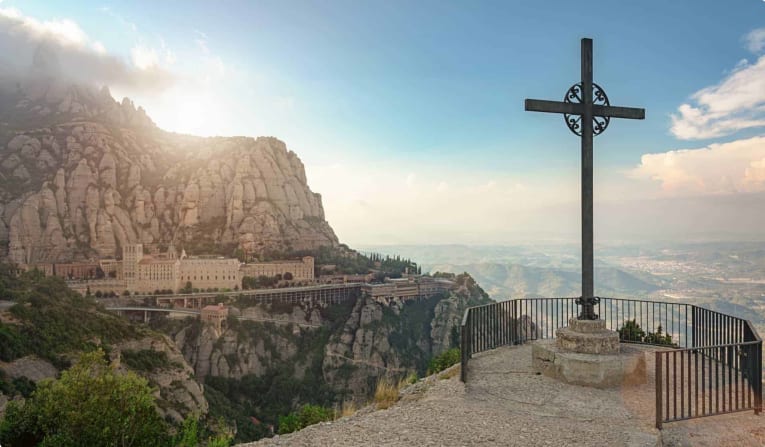
Taragona and Sitges
Taragona is a port city on the Catalan coast famous for its beaches and its Roman history. It was founded in the 5th century BC and later fortified and enlarged by the Romans. The Roman remains of Tarraco are a UNESCO World Heritage Site. The site features Roman walls, a citadel, an amphitheatre and a Necropolis. Be sure to also check out the Roman-Gothic Tarragona Cathedral, dating back to the 12th century.
Sitges is just 35km south of Barcelona and is yet another Catalan city bursting with beaches, restaurants, nightlife and historical sites. The city hosts the world-renowned Sitges Film Festival, which specialises in fantasy and horror films. Between February and March, the city hosts a festival called ‘Carnestoltes’, featuring folk dances, local foods and a ‘Debauchery Parade’.
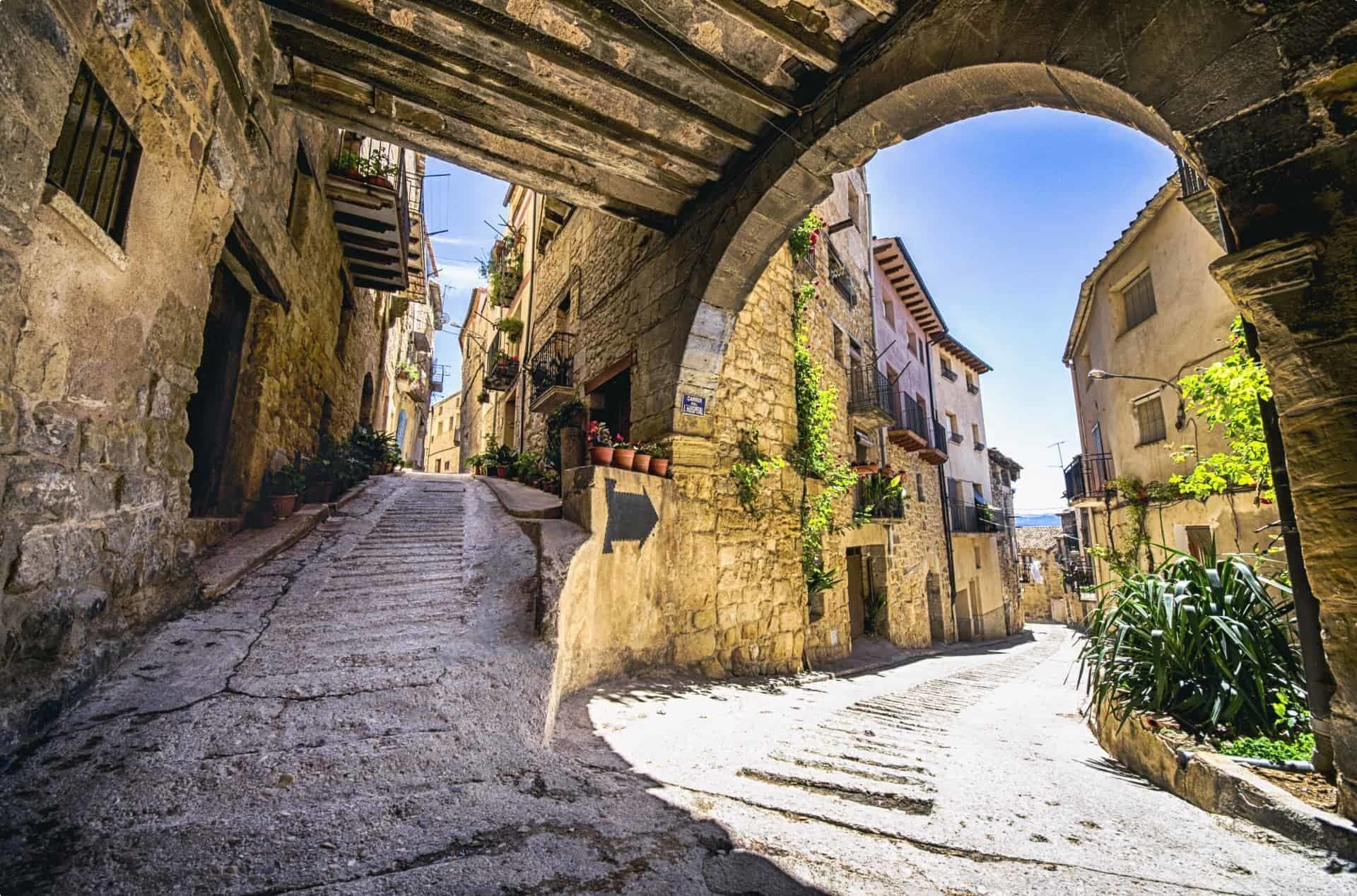
Andorra
This tiny principality in the high Pyrenees mountains of the Spanish-French border is a mecca for winter sports and gorgeous summer strolls. Andorra’s glacial valleys are another UNESCO World Heritage Site. The city of Andorra la vella is characterised by old cobblestone streets and stone houses. Some buildings in the city date back to the 9th century.

Girona
The 14th century medieval fortress city of Girona is the largest in Northern Catalonia, and one of the most charming in the entire region. Dissected by the River Onyar, on the right bank you will find the old town, characterised by narrow walkways and cobbled streets. Girona itself is quite small, and a visitor can complete a circuit of the medieval sections of the city in under two hours. The fabulous Girona Cathedral even featured on a famous episode of the television series Game of Thrones!

Odyssey Traveller takes seniors to Barcelona and beyond
Odyssey Traveller is famous for its small groups, and we average eight participants per tour. Our maximum group size is typically sixteeen people, which ensures quality, flexibility and care that is tailored to our clients. We specialise in small group travel packages for the senior traveller who is seeking adventure or are curious about the world we live in. Typically, our clients begin travelling with us from their mid 50s onward. But be prepared to meet fellow travellers in their 80s and beyond! Both couples and solo travellers are very welcome on our tours.
If you are passionate about learning while you travel, you will find a variety of opportunities with Odyssey Traveller. We offer an immersive three-week stay in Barcelona, as well as tours of Spain and Portugal.
Articles on Spain and Barcelona published by Odyssey Traveller.
The following list of articles published by Odyssey Traveller for mature aged and senior travellers may also help to maximise your knowledge and enjoyment of Barcelona when visiting:
- 15 of the best places in Spain to visit.
- Travel Notes for Barcelona
- Ten of the best books published on Spain
- Ten of the best art galleries in Europe to visit.
- Discovering Spain
- Questions About Spain
External articles to assist you on your visit to Barcelona.
- Lessons About the Moors in Spain
- Monarchs of Spain
- A Brief History of Spain
- Spanish Civil War
- History of Barcelona
Originally published on July 13, 2018
Updated on December 18, 2019
Related Tours

21 days
Apr, Sep, AugBarcelona Small Group Tour | The city explored in-depth
Visiting Spain
Small group journeys from one of the best small group tour companies Europe that delve into Barcelona's history, culture, and cuisine. Daily itineraries for couples and solo travellers with like minded people. An escorted tour of Barcelona based in an apartment with local guides sharing authentic experiences and knowledge.
From A$12,925 AUD
View Tour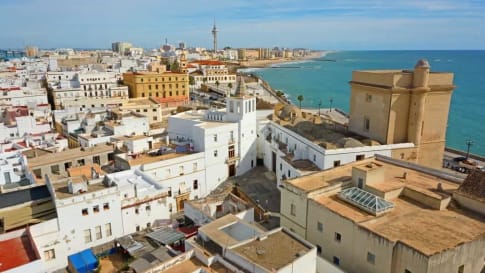
21 days
May, Aug, SepHabsburg Spain vs Tudor England: small group tour exploring 16th century history of England & Spain
Visiting England
This holiday with a leading tour operator allows the escorted tour for seniors to explore the life and times of the royal families responsible for making England and Spain so significant in the 16th century with local guides providing the travel experience for the detailed itineraries. We spend 10 days travelling from London to Madrid.
From A$14,295 AUD
View Tour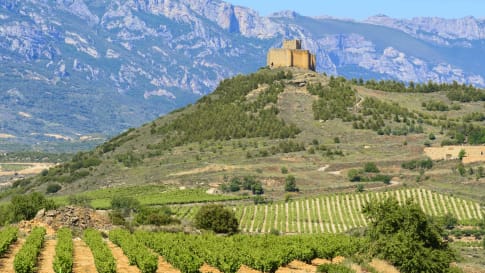
24 days
Apr, Oct, MarSmall Group Guided Tours of Spain and Portugal
Visiting Portugal, Spain
Our program explores the lands of Spain and Portugal, two countries bound by many centuries of history reflected in their modern cultures. Divided by history and language, contiguous neighbours Spain and Portugal were once host to gigantic empires that still bear their languages and lifestyles. A small group tour for couple and solo travellers.
From A$16,225 AUD
View Tour
